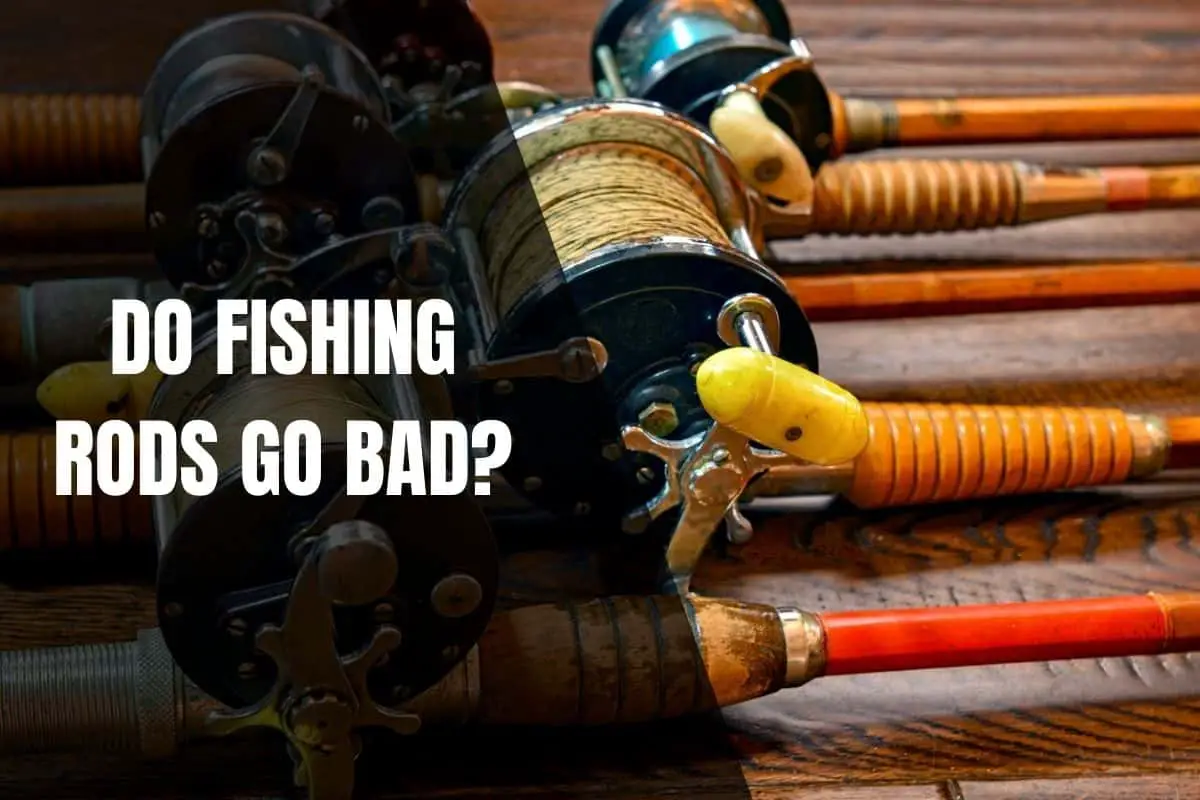As an angler, nothing is more important than your fishing rods. Without a solid rod, there’s no fishing to be done. As crucial as fishing rods are, many anglers are unaware of what kind of lifespan they’ll get out of their rod, and even fewer know how to care for and maintain them properly.
Do fishing rods go bad? Most modern fishing rods can last between 20 – 50 years. However, many factors can compromise a fishing rod’s lifespan. Exposure to heat, UV rays, and saltwater can significantly shorten its lifespan, depending on the material.
Read on as we take a closer look at how long you can expect a fishing rod to last and what you can do to prolong the life of your gear.

How Long Does a Fishing Rod Last?
Does a fishing rod expire?
Fishing rods are designed and built to take a fair bit of abuse and provide decades of reliable use. Some anglers use rods that were handed down to them by their parents!
With modern technology and manufacturing, the rods built today can last even longer, assuming you are maintaining your rods and properly storing your rods.
That being said, you can expect a fishing rod to last between 20-75 years.
How Does Fishing Rod Material Affect Lifespan?
Today, fishing rods are made with different materials. Some materials are modern, and some are the same type of materials used back in the day.
Each material has different performance characteristics but do they have different lifespans?
| Fishing Rod Material | Expected Useful Life |
|---|---|
| Carbon Fiber | 20 – 50+ years |
| Graphite | 20 – 50+ years |
| Fiberglass | 25 – 40 years |
| Aluminum | 20 – 50+ years |
| Wood / Bamboo | 10 – 50+ years |
There are a lot of different factors that go into how long your fishing rods will last. Some of these factors are:
- How many times is the rod used
- How much load is the rod under
- Environmental factors (saltwater, UV, heat, etc.)
- Rod Cleaning and Maintenance
- Rod Storage
Depending on the material, your rods will be affected differently. Let’s take a deeper look to understand the driving factor behind each of these materials’ lifespans.
Carbon Fibre Material
The actual carbon fibres themselves are very strong and durable. Since carbon fibre is a manufactured material, it doesn’t deteriorate as natural materials do like wood. Carbon fibres will take thousands of years for them to deteriorate.
Therefore, it’s not the carbon fibres that will deteriorate but the resin used to bond the carbon fibres together.
Think of the carbon fibres as small stick and the resin as the glue that holds the sticks together.
The resin will deteriorate first before the fibres do. Depending on the resin used, it could decay because of UV exposure, physical damage like scratches, and being overly loaded, causing the rod (and the cured resin) to stretch near or at its limit, causing the resin to deteriorate faster rate.
Graphite Material
Graphite is another carbon-based material. Not to be confused with carbon fibre materials.
Think of graphite as small crystals on a tray and the resin is the glue that holds the carbon crystals together.
Graphite’s molecular structure causes the material to be more brittle and softer than carbon fibre, but graphite still has the same long lifespan as carbon fibre.
Therefore, graphite rods are limited to the resin deteriorating first.
Graphite is a much softer material than carbon fibre making it more prone to physical damage leading to the breaking.
This can be easily avoided by proper rod storage to protect the rod from physical damage is important.
Fiberglass Material
Fibreglass itself is very strong and durable. If this were not the case, then boats would not have been made using fibreglass. However, they are more subjected to age and fatigue from being used excessively.
Over time the glass fibres can become brittle, causing the rod to lose some flexibility and increasing the chances of micro-cracks forming in the rod. The resin for fibreglass is waterproof to protect the glass fibres. However, once there is a crack in the resin, water can get cause the glass fibres to deteriorate.
Wooden Material
Fishing rods made from wood are very durable and strong. They can last for a long time. Heck, you might have seen a wooden fishing rod that is older than you are and look in better shape than you.
However, wood is a natural material, and it’s subjected to aging, making it weaker over time unless you take proper care of the rod.
Assuming the wood is treated and has a protective coating that keeps water from being absorbed into the wood and protects wood from the elements, making it last longer.
Most wooden rods are made from bamboo or greenheart wood.
Are Old Fishing Rods Still Good?
Don’t be judging a rod by its age. Even if the rod is old, you can still use the rod without any issues. That is, of course, assuming the rod was taken care of and is in good shape.

How To Tell If An Old Fishing Rod Is Still Good To Use?
There are several signs you can look for to determine if an old fishing rod should be used or not.
1. Damage to Decals and labels
If the rod’s decals or labels are damaged, it could signify that the rod might’ve been abused in the past. However, that may not always be the case.
When looking at the decals and labels, pay close attention to how these were stuck onto the rod. Some older rods have stickers that were applied. If this was the case, the stickers could have fallen out or deteriorated over time.
2. Look for scuffs, scratches, and markings on the rod
If you see any scuffs or markings, it could mean that the rod might have some micro scratches on it that you can’t see. This is not always the case. It just depends on what might have caused the scuffs or markings on the rod in the first place.
Scratches are far more concerning on a fishing rod. Since a fishing rod will need to bend, it will cause some stress on the rod’s material. These cracks will act as stress risers (increase stress levels) compared to the rest of the rod.
These stress risers will be the most likely area where the rod will break.
3. Does the rod feel tacky when you touch it
If the rod feels tacky, it could be dirt buildup, or the protective coating is no longer good. Both are not great.
Dirt Buildup:
Unless you are looking at a wooden rod, dirt would probably not affect the rod, but it’s a sign to question how well a rod was taken care of. Dirt buildup on wooden rods might lead to the wood rotting at a localized spot because microbial could be eating away the wood.
Protective Coating:
If the protective coating is no longer good, that could result in the resin, epoxy, or any other protective coating feeling a bit tacky or sticky. If the coating is not good, then things like water or moisture might have contacted the rod material, weakening it.
4. Look for discolouration or bubbling on the rod.
Some of the main things to look for if the protective coating had failed would be discolouration and bubbling on the rod.
Discoluartion could be from UV exposure or water making contact with the rod material. Discoluartion may not be a sign that the rod is damaged, but it’s hard to determine how much effect water had on the rod. It’s better to be safe than sorry. You don’t want to find out if your rod is no good as you are trying to land a fish.
Bubbling could signify that water found its way between the protective coating and the rod material. The water turns into steam as temperatures rise, pulling the protective layer away from the rod. Also, depending on the type of protective coating used, over-exposure to UV rays can cause bubbling.
4. Does the guides, tip, and rod handle look in good shape
If the guides, rod tip, or rod handle look damaged, these items can be repaired, but it could be a sign of how well these rods were cared for.
I should preface that damaged guides and tips can happen for various reasons. Most of them are harmless to the rod and result from wear and tear on the guide.
Happy Fishing & Tight Lines
